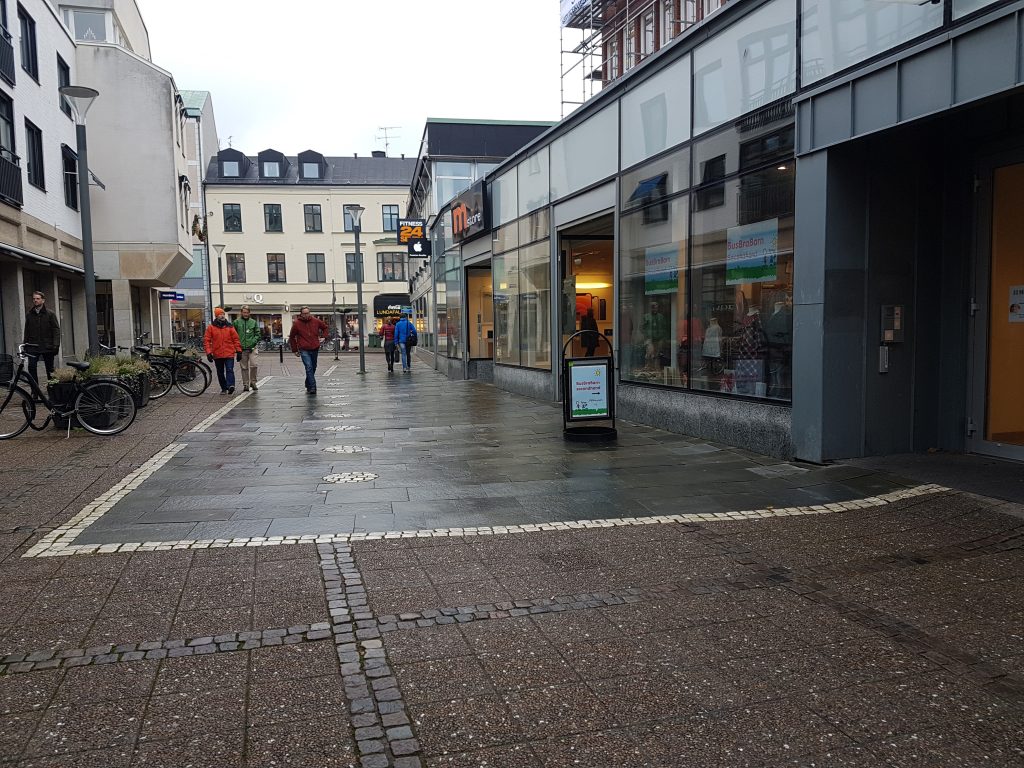The Stave Church in Kattesund

Why are some paving stones white and laid out in a pattern? This question is perhaps asked by many Lund residents when cycling or walking by Kattesund. The simple answer is that they mark where the walls and columns of a large stave church was once located in the eleventh century.
Stave churches were built of wood and their name comes from the method of construction: poles standing on horizontal beams supported walls made of wood. The load-bearing elements in the walls were formed by frames filled with vertically standing boards or staves. Most stave churches that remain today are found in Norway.
During the Middle Ages, Lund had more churches than any other Nordic city.
Before the Reformation, there were 27 here.
The church at Kattesund is thought to have been the largest stave church in Scandinavia.
It was located just east of the stone church, Saint Drotten, and built around the year 1050. It is not known which of the saints it was dedicated to. That is why it is called the Eastern Kattesund Church. It was demolished around the year 1100
The church was twenty-six metres long – the nave was eighteen metres, and the chancel was eight by eight metres. The eight oak pillars inside the church walls were just over half a metre in diameter. Most of the timber dated from around 990 and probably was reused from a former stave church.
Nowadays, only part of the white markings can be seen. This is due to the open space being partly built over when the shop premises in the area were extended, something which the association Gamla Lund (Old Lund), amongst others, protested against.
Text: Solveig Ståhl
